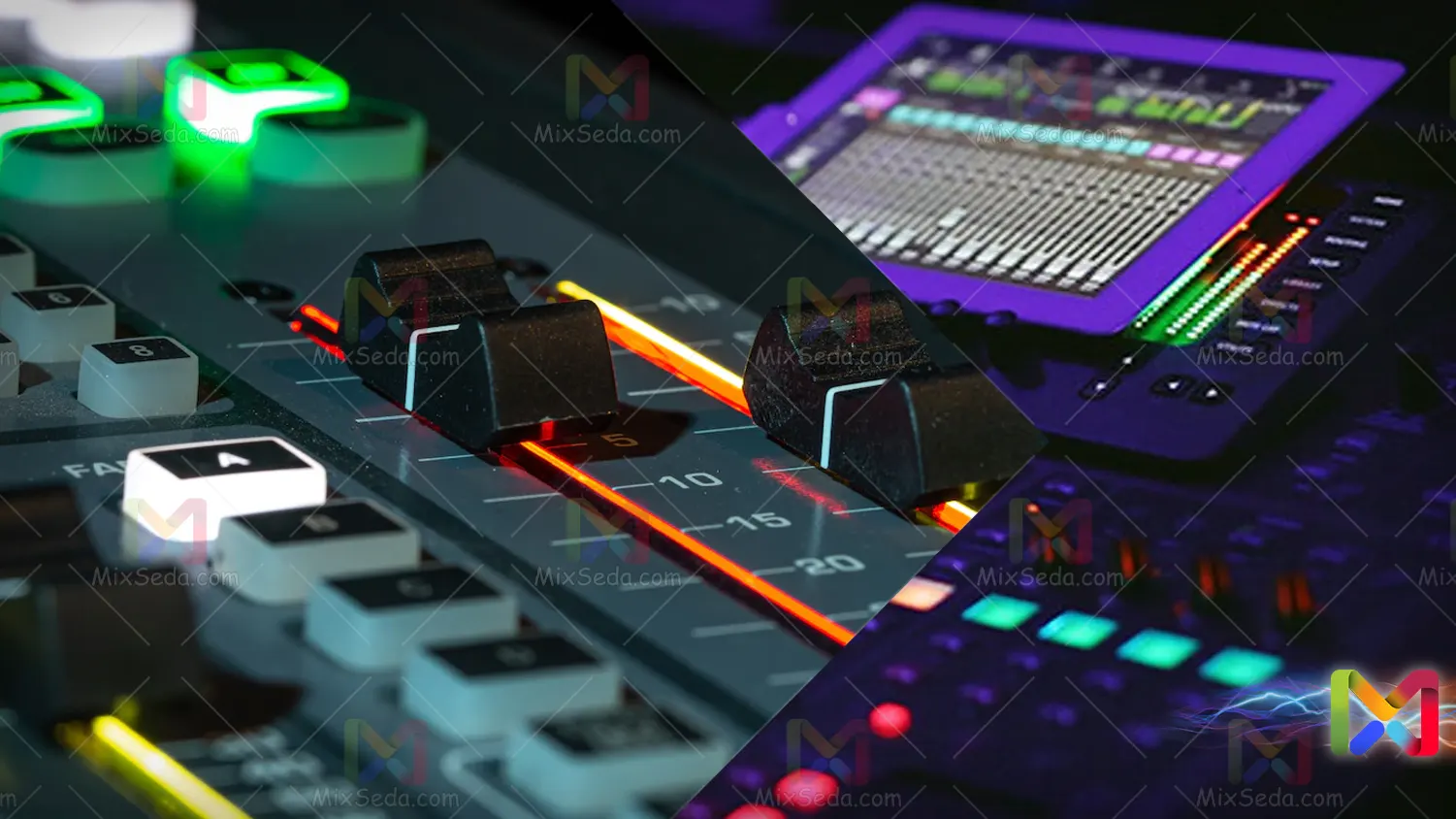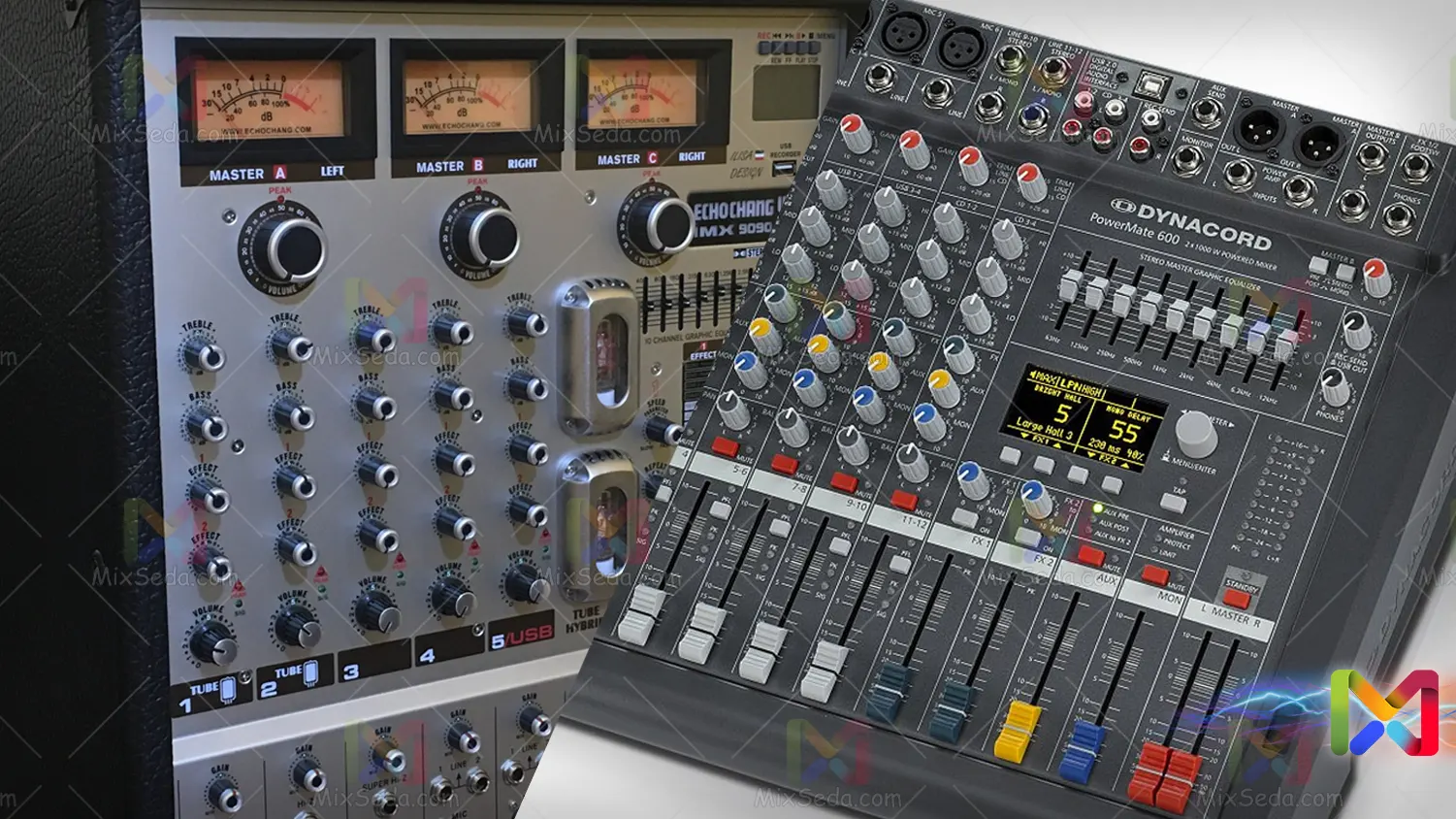
Main control
In audio mixers, the main sound output is called the master. Mixers with multiple audio outputs usually name their master with numbers or letters. For example, Master A and Master B. Of course, these are just names.
The main control is the part of the mixer that is designed to generally adjust the main output of the mixer. Master Voice Control is one of the easiest things to do if you can't get it right, the sound may be distorted or you may not get the desired result for whatever reason.
Suppose that in a live performance, where singers and musicians perform together, the master feeders allow the recorder to adjust the total volume of all of them with a single number of feeders. Or, if it's stereo, do it with two left and right power supplies.
The total duration of a program; From start to finish all sound senses as well as other settings must also be at these power supplies.
In conventional and low-end mixers, the master volumes are rotary, but in semi-professional and professional mixers, the main master volumes are in the form of linear volumes to the right of the mixer. (Usually the main main power supply from the left side of the audio mixer is the last power supply)

Main control tool
In many mixers (lying down), the master is controlled by a power supply. But in cheap (standing) mixers, this control can be done with rotating volumes.
Examples of standing mixers include PM 1600-3 and examples of standing mixers include Dynacord's PM 502.
Master mixers usually have sub-feeders, such as accelerators and monitors, and control the talkback microphone (a standalone microphone to communicate with those far away from it, or a singer in the studio. The room is isolated, communicates), they have a key main and also have a matrix mix (which is a mix with multiple inputs and multiple outputs).
Position
Small mixers have their main mixer on the right side of the mixer and large mixers in the center of the mixer.
The reason the master is in the middle of large mixers is the ever easier access to this part of the recorder.
If in large mixers this section is to the right of the mixer as in small mixers, access to this section will be difficult for the recorder and may lose focus on handling and mixing the lines.
Small mixers include the PowerMate 600-3 and relatively large mixers include Dynacord's PowerMate 2200-3.
